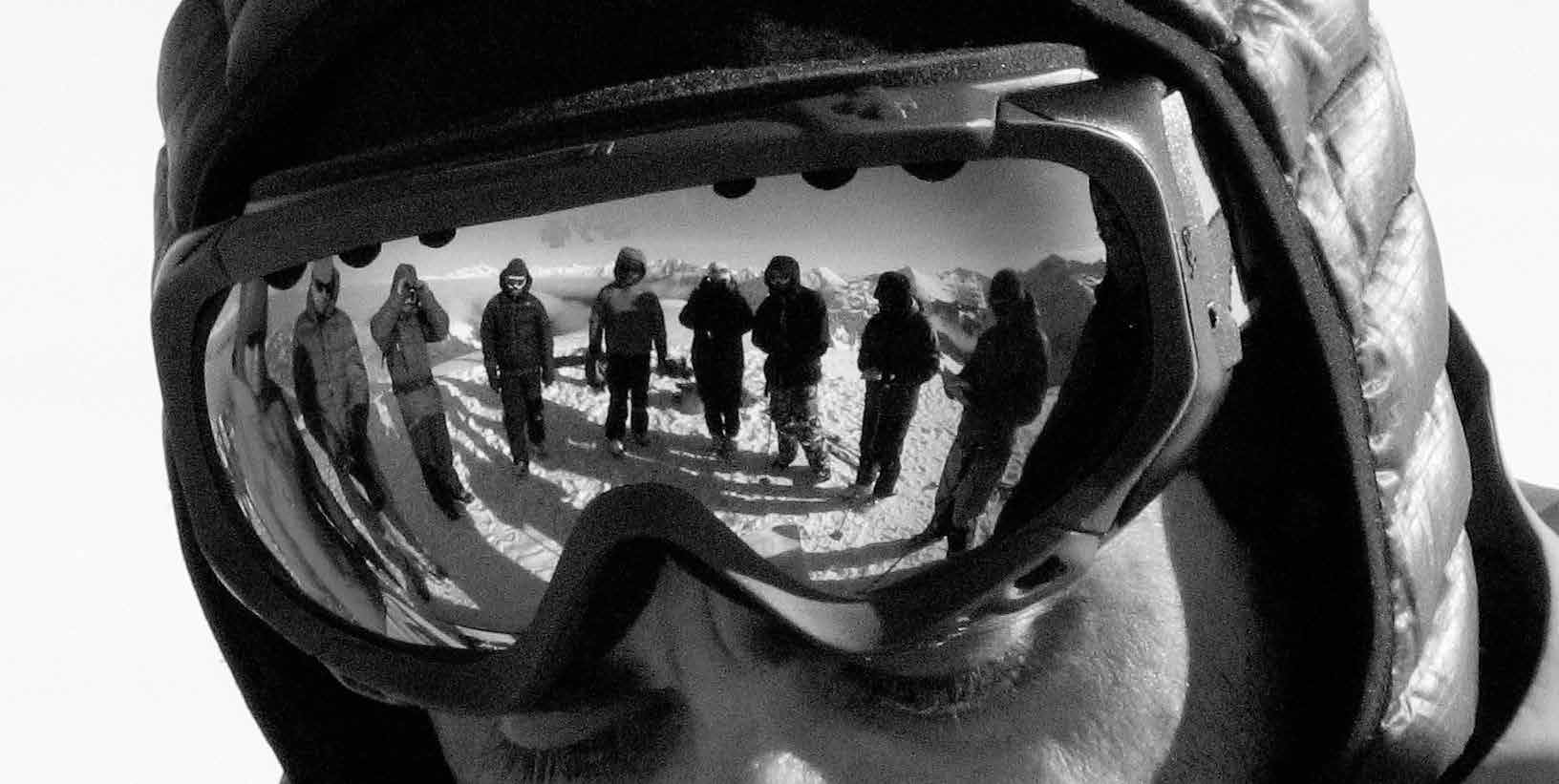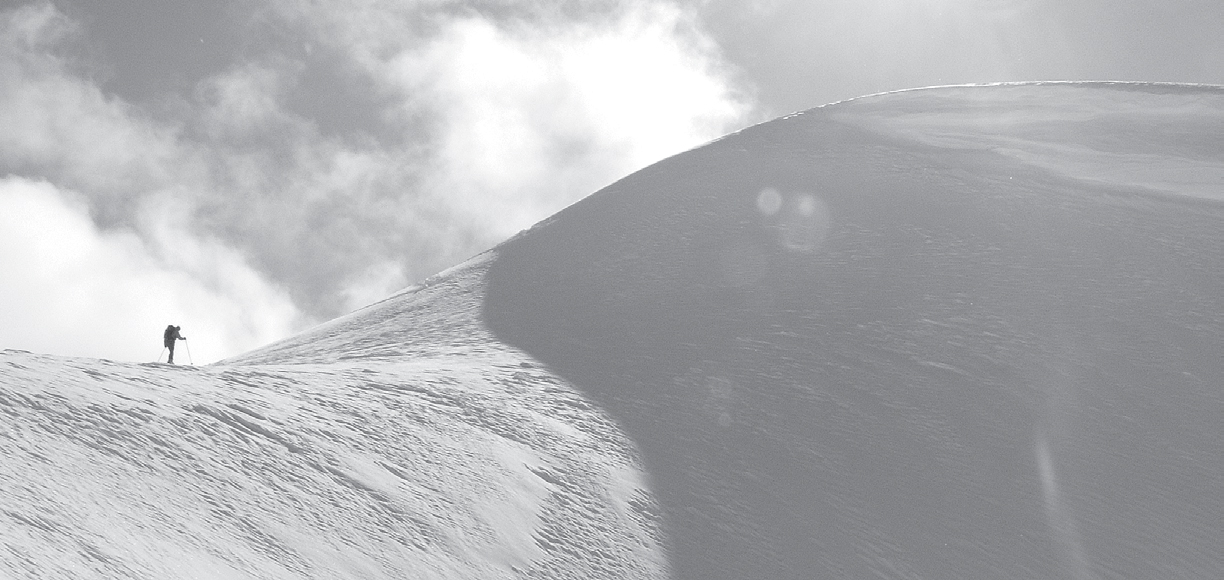
By Roger Atkins
From vol. 120, spring 2019
I first wrote about Strategic Mindset in an appendix to my CAA Level 3 project. Some years later I presented strategic mindset in Banff at ISSW 2014 in a paper entitled “Yin, Yang, and You.” I am surprised by the amount of interest these papers received from professional guides, but also among people doing other types of avalanche safety work. Some guiding operations chose to formally incorporate strategic mindset into their meetings; this is now common practice in North America and elsewhere. The strategic mindset idea originated in the context of guided helicopter skiing, but the concept can be adapted to other endeavours.
During a helicopter skiing operation’s morning meeting, the guides discuss and assess hazards and other considerations for the coming day and produce a ‘run list’ - a binding agreement that excludes some runs from consideration for the day and identifies which other runs are open for guiding. The run list is only the first level of the day’s decisions; many hazards remain on open terrain and actual travel and risk treatment decisions continue throughout the day. I noticed that I automatically take something less tangible than the run list but equally important away from the meeting, something that strongly influences my remaining decisions. I recognize this as a mindset: a personal perspective on the day. This perspective (or filter) makes me wary of certain terrain characteristics. It also establishes a desire for select rewards to seek and attracts me to terrain that offers those experiences.
“When we change our mindset, we actually change the way we
see the world.” - Shelly Carson, Harvard Brain Researcher
As implied by the following definition, a mindset results in an inclination that influences decisions, but it should not be considered a recipe for making decisions.
MINDSET:
1. A fixed mental attitude or disposition that predetermines
a person's responses to and interpretations of situations.
2. An inclination or a habit.
(The American Heritage Dictionary, 2009)
Although strongly related to the discussion around hazard assessment, I also noticed how my mindset is influenced by other factors. Some are personal, such as fatigue or desire; some are operational, such as terrain maintenance through skier traffic. Over time I identified that certain situations repeatedly led to familiar mindsets. It occurred to me that perhaps there is value in identifying familiar situations and in strategically adopting a corresponding mindset.
Guiding operations do not willingly add anything without value to their daily routine, so what does strategic mindset provide that was not there before? One standout benefit is that strategic mindset is a communication tool. The language of strategic mindset can help guides express how they feel about the approach to the day. We have always informally shared our feelings but adding strategic mindset to the meeting agenda makes this more consistent. During the day, it also provides a clear and concise way to communicate if our mindset is changing or if our actions seem inconsistent with the mindset. This communication can help us work better together as a team. Strategic mindset is also useful for communication between operations. Some guides use strategic mindset to communicate with their guests.
Strategic mindset is a deliberate biasing strategy. Although it is typically reflected in the daily run list, I find that my mindset is most relevant to on-the-spot guiding decisions during the day. When approaching a potentially critical terrain feature, we must decide whether to avoid it, to stop and manage the risk, or to just ski right over it. This happens tens of times per day and we are quickly overwhelmed by a detailed analysis of every decision; strategic mindset can simplify many of these decisions. Choices that fit the mindset often require relatively little effort while choices that are out of character with the mindset demand more careful assessment.
Decisions in avalanche terrain are high consequence risk vs reward decisions that are made under uncertainty. Traditional methods and education tend to focus on the hazards and associated risks and completely ignore the reward part, but the potential rewards are the only reason we even accept any risk. We cannot account for our humanity without considering the rewards. Even at the best of times, our written assessments tend to read like a horror show, only identifying hazards and not speaking to positive aspects that enable us to satisfy our desires without unacceptable risk. Strategic mindset is more balanced in that it includes the idea of adjusting one’s desires to fit the situation. Some familiar mindsets bias us toward actions that keep us safe in difficult times while other mindsets enable us to capture our dreams when the opportunity arises.
We are naturally biased toward actions that fulfill our desires. Part of strategic mindset is to adjust our desires to fit the situation, thus creating a motivational bias toward actions that fit the situation. One of my fellow guides summarized a past close call nicely:
“It was a stupid idea...I mean, it was a good idea, but it was the wrong day.”
There are potential downsides to the operational use of strategic mindset. Strategic mindset is a deliberate bias. An appropriate bias is beneficial, but what if we get it wrong? Interestingly, when we make the wrong choice of mindset, I find that it is usually easier to recognize the mistake, change our mindset, communicate the change and adjust our decisions than to re-analyze the hazard assessment and adjust accordingly. Maybe this is because the mindset manifests itself as a feeling rather than the conclusion of an analysis. Nevertheless, it is critical to keep open eyes and an open mind to combat confirmation bias, both for hazard assessment and strategic mindset.
My original list of familiar mindsets is not intended to cover all situations and it can be an undesirable distraction to try to select the right choice from such a list. As implemented at CMH, we are not forced to choose a mindset. We can leave it undetermined or coin a phrase that captures a new strategic mindset, for example High Alert or Spring Transitional. Worthy additions that are concise and self-explanatory will persist; others will naturally die. I encourage expanding the list of familiar mindsets and adapting it to suit your needs. Allow the language of strategic mindset to evolve.
The use of strategic mindset is not a substitute for diligent observation and assessment. Strategic mindset is intentional manipulation of human behaviour to our benefit. It is intended to work in conjunction with a solid foundation based on the fundamentals of avalanche hazard assessment.





